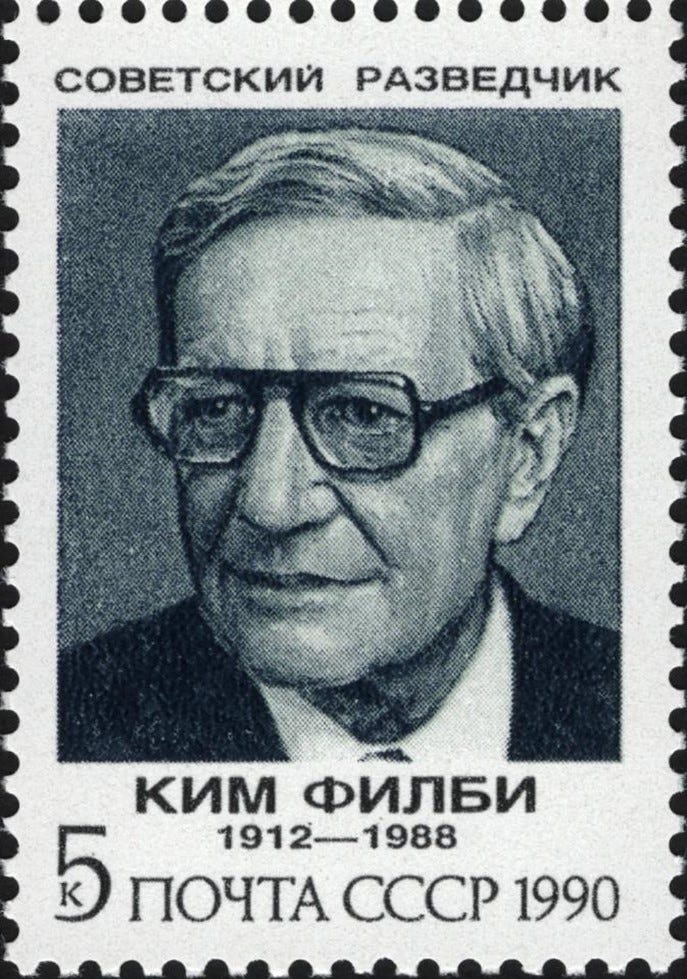Spy stories come no better than from the pen of David John Moore Cornwell, who wrote under the name John le Carré. A master of the espionage tale, he was able to draw on "practical" experience having worked for the UK’s MI5 (Secret Service) and MI6 (Secret Intelligence Service) in the 1950s and 1960s. For anyone who might not have read le Carré, as a starting point you can’t improve on his 1963 best seller The Spy Who Came in From the Cold.1
It is perhaps not surprising that a number of well-known and highly successful contemporary authors, who we will meet shortly, had practical experience as working spies. But it turns out this is not a recent phenomenon. So we will start this story in the 16th century, although doubtless astute readers will spy out even earlier examples, such as the Lord's instruction to Moses to send twelve spies to reconnoitre the land of Canaan.2
Spying in the Elizabethan period
The political landscape of the Elizabethan period was dominated by feuds, intrigue and assassination plots associated with ongoing tensions between Protestantism and Catholicism. The monarch, Queen Elizabeth I, needed information about the plans of her many Catholic enemies. As a consequence, there was a strong labour market for spies — those who could be trusted, and could infiltrate the enemy to glean insights to pass to the Queen and her advisors to, above all, forestall attempts at assassination.
Key amongst the Queen's advisors was Principal Secretary Sir Francis Walsingham. He was Elizabeth’s spymaster, secret policeman, and propaganda chief.
"This ruthless and completely loyal servant of the English Crown employed all the devious techniques used by modern intelligence communities known as tradecraft. Among these were the use of dead-letter boxes, complex ciphers, and secret writing. Other schemes involved bribery, extortion, blackmail, forgery, and double or triple agents".3
"The Catholic plots against Queen Elizabeth were ceaseless, but all were uncovered one after another by the English Secret Service, skilfully built up under the direction of Sir Francis Walsingham to become the greatest and most successful espionage network of the time, with 53 agents, of which 18 were place overseas in places as far away as Turkey to cover every exigency. It was entirely thanks to the efficiency and dedication of Walsingham’s Secret Service that Queen Elizabeth led such a charmed life and escaped assassination".4
Lord Burghley, in addition to being the Queen Elizabeth’s chief minister, was Chancellor of the University of Cambridge. In this role, he used the University to recruit bright, patriotic young men to serve as secret agents. Cambridge University was to have a long history as a breeding ground for spies; this continues to the present day.
Evidence suggests that in 1584, at the time he was completing his BA, the playwright Christopher Marlowe was picked out for this service. He became an agent in England's first secret service network founded by Sir Francis Walsingham. The evidence is assembled by Park Honan in Christopher Marlowe: Poet and Spy5 and Giles Ramsay in From Gods to Bad Boys: A History of Theatre in Twelve Lives6.
Writing paid better than spying
As women did not attend Cambridge in the 17th century, Aphra Behn was not recruited in the hallowed halls. Rather she came to the attention of King Charles II, and was hired as a spy at the time of the Anglo-Dutch War. She was sent to Antwerp in 1666, under the code name "Astrea". However, after some years, the Crown proved tardy in making payments to her, and, facing financial hardship, she was forced to end her role as a spy. She turned to writing and is regarded as England's first women to earn a living solely by writing, as described by Janet Todd in Aphra Behn: A Secret Life.7
Fake news is nothing new
Espionage can take many forms, and generating fake news is a technique that has been widely used. Gavin Mortimer, in a recent book entitled The Phoney Major: The Life, Times and Truth about the Founder of the SAS8, documents an extraordinary example from 1941. Two Scots, brothers David and Bill Stirling, played a key role in establishing a fictional unit in Egypt called the 1st Special Air Service Brigade (1st SAS). The plan was to convince the Axis forces that the Allies had at the ready a significant paratrooper force. Fake SAS soldiers, false documents, and news items were used to create the illusion. In actual fact the Allies had no airborne forces anywhere in North Africa, but subsequently captured documents revealed the Italians were aware of a potential threat.
Another intriguing WWII spy story is that of Sven Somme, a Norwegian scientist, who, after the occupation of Norway in 1940, become involved in the resistance movement and spied on the Germans, providing information to the Allies. He was eventually arrested and faced being executed, as his brother Jacob was. However he escaped and made a 200-mile cross mountain trek to Sweden. His story makes compelling reading in Another Man's Shoes.9 It contains a lengthy introduction by Elle Somme, his daughter, who on the 60th anniversary of his 1944 trek retraced her father's route, meeting people on the way whose families had assisted him.
Graham Greene (1904-91) was one of the most productive English authors of the 20th century. Educated at Oxford, he was employed by MI6 as a spy, working in West Africa from 1941-44. (His supervisor at MI6 was Kim Philby, who features below.) Greene drew on those experiences in a number of novels, notably The Human Factor.10
A contemporary of Greene was Ian Fleming (1908-64) of James Bond Agent 007 fame. Fleming spent the war years with Naval Intelligence; hence his background for subsequent novels involving spies. Oliver Buckton (2021) has written The World is Not Enough: A Biography of Ian Fleming.11
And the Cold War
Coming closer to home, Oleg Gordievsky was KGB agent who, after enjoying the freedoms of the West while assigned to Copenhagen, became totally disillusioned with the Soviet regime. His concerns were accentuated by the Soviet invasion of Czechoslovakia. Already fluent in several languages, he studied English and lobbied for a posting to London — where he spent several years as a double agent. He would prepare reports for Moscow in his day job, and then forward these to MI6.
Eventually he came under suspicion and was recalled to Moscow. But, with British support, he escaped and returned to Britain. The English had been delighted with all the information he had been able to pass on to them. He was appointed Companion of the Most Distinguished Order of St Michael and St George (CMG) for "services to the security of the United Kingdom" in the 2007 Queen's Birthday Honours, and provided with a generous pension and a house where he lives today.12
Ben McIntyre has written a biography of Gordievsky, The Spy and the Traitor: The Greatest Espionage Story of the Cold War.13 And in his retirement in England, Gordievsky wrote Next Stop Execution: An Autobiography of Oleg Gordievsky.14
Gordievsky has travelled widely (no doubt with significant security). He made four visits to New Zealand and advised Prime Minister Lange of the extent of KGB infiltration in the Labour Party. One might speculate as to whether the Wellington senior public servant, Dr William B Sutch, whose Soviet leanings have been well documented, knew Gordievsky.
It is widely believed that a CIA officer working in Washington as a double agent for the KGB was responsible for tipping off Moscow about Gordievsky. Aldrich (Rick) Ames had no deep-seated ideological position. His Colombian wife, Maria del Rosario Casas Ames, came from the upper levels of society in Bogota, and felt entitled to a standard of living that the salary of a mid-level CIA agent could not possibly support. The KGB paid Ames very large sums (in the millions of US dollars) which supported their lavish and ostentatious lifestyle.
Ames is currently Federal Bureau of Prisons prisoner #40087-083, serving his life sentence in the medium-security Federal Correctional Institution in Terre Haute, Indiana. His wife was sentenced to 5 years and upon her release returned to Columbia. There is a plethora of books written about Ames and the failings within the CIA. 2B RED recommends Sell Out: Aldrich Ames, the Spy who Broke the CIA.15
The other Cambridge degree course
For our final selection of notable spies, we return to that recruitment ground for the loyal, patriotic, young student with a strong ideological bias towards communism. Cambridge University continued its long-standing tradition and produced what became known as the Cambridge Five.
These five were recruited at Cambridge University in the 1930s to work in the British spy agency MI6. They were good at their craft – so good that they figured out how they could become double agents and serve Russia as well. They all had strong convictions that Soviet communism was a superior political system. Of the five, the most infamous was arguably Harold "Kim" Philby who reputedly passed on more than 900 British secret documents to the Russians. As it became clear that his activities were increasingly under suspicion, he defected to Russia. For a comprehensive account see Ben McIntyre’s A Spy Among Friends: Kim Philby and the Great Betrayal16, and for Philby's own story see My Silent War: An Autobiography of a Spy17.
You would certainly know that your Russian hosts thought you'd been very useful, when in addition to giving you an apartment and a pension, they issued a stamp in your honour.
Moral of the story: If you want to become a best-selling author of spy novels, enrol at Cambridge University, and/or get some real field experience as a spy.
By Grant Scobie
Addendum: As I was completing this column, The Economist newspaper (October 14, 2023) reviewed two books, which will have to be added to my future reading.18
Nicholas Shakespeare (2023). Ian Fleming: The Complete Man. London: Harvill Secker.
Adam Sisman (2023). The Secret Life of John le Carré. New York: Harper.
John le Carré (1963). The Spy Who Came in From the Cold. London: Victor Gollancz and Pan.
Numbers 13: 2-20.
Park Honan (2007). Christopher Marlowe: Poet and Spy. Oxford: Oxford University Press.
Giles Ramsay (2021). From Gods to Bad Boys: A History of Theatre in Twelve Lives. (Independently published).
Janet Todd (2017). Aphra Behn: A Secret Life. London: Bloomsbury Reader.
Gavin Mortimer (2022). The Phoney Major: The Life, Times and Truth about the Founder of the SAS. London: Constable and Robinson.
Sven Somme (2005; Third Edition 2022). Another Man's Shoes. Worcestershire: Polperro Press.
Graham Greene. (1978). The Human Factor. (London: Everyman's Library).
Oliver Buckton (2021). The World is Not Enough: A Biography of Ian Fleming. London: Rowan and Littlefield.
See Episode 3 of the Netflix series SPY OPS for the story of Gordievsky, including interviews with him and details of his remarkable escape.
Ben McIntyre (2018). The Spy and the Traitor: The Greatest Espionage Story of the Cold War. London: Crown Reprints.
Oleg Gordievsky (2018). Next Stop Execution: An Autobiography of Oleg Gordievsky. Lume Books.
James Adams (2017). Sell Out: Aldrich Ames, the Spy who Broke the CIA. London: Lume.
Ben McIntyre (2014). A Spy Among Friends: Kim Philby and the Great Betrayal. London: Crown.
Kim Philby (1968; reprinted 2002). My Silent War: An Autobiography of a Spy. London: Modern Library.







